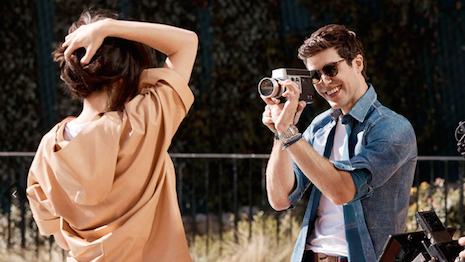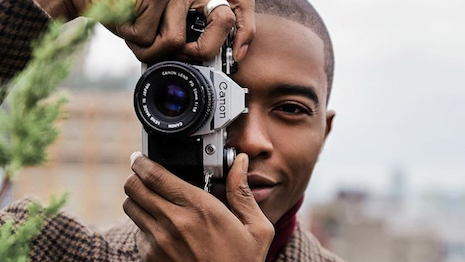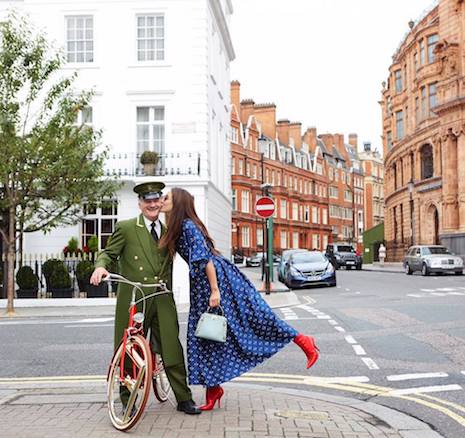 Tod's tapped celebrity influencer Kendall Jenner for its spring campaign. Image credit: Tod's
Tod's tapped celebrity influencer Kendall Jenner for its spring campaign. Image credit: Tod's
Regulatory pushes for greater transparency in branded influencer content have not hurt the consumer response to these campaigns, according to a report from Mavrck.
Quelling concerns that disclosure would hamper audiences’ interest in branded posts, engagement rates for influencer-generated content (IGC) on Instagram grew 34 percent in 2017. Influencers with the least followers led the pack in interaction rates, showing that bigger is not always necessarily better when it comes to brand partnerships.
"As it stands, most marketers are collaborating with influencers in a limited capacity: to create content," said Liz Gottbrecht vice president of marketing at Mavrck, Boston. "Yet influencers, by definition, have empathetic insights and relationships with the very same audiences that marketers are trying to connect with themselves, so not bringing influencers into the research, strategy, planning and media functions of the marketing process is a missed opportunity.
"To maintain authenticity, the marketers who build long-term relationships with new creators or engage those who already love the brand, and bring them onboard as partners through every aspect of the marketing process, will have the biggest advantage when it actually comes to collaborating with influencers to create compelling branded content."
Mavrck’s 2018 Instagram Influencer-Generated Content Benchmark Report looked at 35,000 posts from about 6,500 influencers with followings between 1,000 and 500,000.
Efficacy and engagement
Influencers across the board grew their engagement rates last year, but the strongest uptick among Mavrck’s sample was seen among those with between 50,000 and 100,000 followers, whose engagement rates rose 114 percent.
Those whose audiences number between 100,000 and 500,000 see the greatest average engagement from posts, with about 4,000 interactions. Micro-influencers with follower counts of less than 5,000 see the greatest engagement rate, gaining interactions that represent 7 percent of their total audience numbers.
Influencers with less followers have higher engagement rates. Image credit: Carl F. Bucherer
This trend also holds true for branded influencer content. Influencers with upwards of 100,000 followers see the most engagements with 2,400 interactions, while content producers with the least followers see the highest engagement rates at 6 percent.
Across the board, the greater followers an influencer has, the more engagement they will see, while rates of engagement climb as follower counts decrease.
Influencers with between 1,000 and 10,000 followers also saw the least difference between their engagement rates for their editorial content and branded content.
"This is where we see news feed algorithms having the biggest impact," Ms. Gottbrecht said. "Both Facebook and Instagram have made a number of updates to their feed algorithms during the last few years to prioritize posts from 'friends and family' first, rather than most recently published content.
"Influencers with smaller followings have a larger percentage of their audience bases comprised of friends and family, and as influencers, they're likely to post more frequently than the average user, so they benefit most from these changes," she said.
Retail and fashion brands see the most engagement for their posts. Image credit: Harrods
Retail and fashion saw the highest engagement rate for branded IGC of any category last year, with 5 percent of influencers’ audiences interacting with content. Food and beverage followed with an engagement rate of 4 percent, with travel and hospitality and alcohol following close behind.
Influencing Instagram
Seventy-eight percent of marketers working in fashion, luxury and beauty report leveraging influencer campaigns, marking a 13 percent increase in the past year.
According to a new report from Launchmetrics, brands are also investing more heavily in this tactic, with 60 percent of marketers expecting their budgets for influencer efforts to grow in 2018. With millennial and Generation Z consumers driving much of luxury’s growth today, influencer marketing has become a key component of marketers’ outreach to these digitally-native individuals.
Influencers favor Instagram over other platforms, with Snapchat, YouTube and blogs seeing decreases in preference among these individuals since last year (see story).
Some of Instagram’s popularity has to do with the platform’s investments into the influencer experience. Mavrck’s report notes that in the last year, Instagram has made a number of updates aimed at appealing to influencers with large followings.
In 2017 alone, Instagram added content sharing formats such as Instagram Stories and the ability to post up to 10 photos at once. To allow for easier disclosure of brand promotions, the platform also released a “paid partnership” tag.
For those looking to drive sales through Instagram, shoppable posts debuted last March.
Attracting influencers can impact a social media platform’s success, as these personalities drive business.
Aside from having an engagement benefit for brands, influencer marketing could also lead to sales, according to research.
Many luxury brands have adopted influencer marketing strategies, but it is not always easy to connect partnerships with personalities into conversions. A report from Olapic proves the commercial potential of these content collaborations, showing that 31 percent of consumers have bought a product or service because an influencer posted about it (see story).
"Instagram (and Facebook, with its Creator Studio) has introduced tools that enable influencers/creators to effectively build and grow businesses and pursue more lucrative brand partnerships," Mavrck's Ms. Gottbrecht said. "Platforms that provide creators with the features and tools to measure their content performances, to create and amplify content more effectively and to share data about their audiences – all of which makes them better partners to marketers – will be the platforms that retain their talents, audiences and business."

